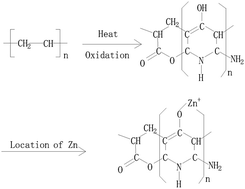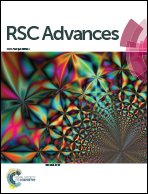Adsorption of hexavalent chromium by polyacrylonitrile (PAN)-based activated carbon fibers from aqueous solution
Abstract
Polyacrylonitrile (PAN)-based activated carbon fibers (PAC400 and PAC600) were prepared by heating Zn(NO3)2 pretreated-PAN at 400 °C and 600 °C for the removal of Cr(VI) from aqueous solution. Formation of PAC400 and PAC600 was confirmed by FTIR and XPS. Field Emission Scanning Electron Microscopy (FESEM) imaging of PAC400 and PAC600 revealed the formation of nearly spherical agglomerated particles. The conditions for adsorption of Cr(VI) onto PAC400 and PAC600 had been optimized and kinetics and isotherm studies were performed. Although the adsorption took place in the range of pH (2–6), pH 3 was found to be most suitable. The adsorption data fitted well with the pseudo-second-order rate model and Langmuir isotherm model. PAC600 showed much greater ability in the adsorption of Cr(VI) than PAC400, and Qmax were calculated to be 187.79 mg g−1 and 136.87 mg g−1 based on the Langmuir model, respectively. Desorption experiments showed PAC600 and PAC400 can be regenerated and reused. The adsorption process for the removal of Cr(VI) was governed by the ionic interaction between protonated amine groups of PAC and HCrO4− ions.


 Please wait while we load your content...
Please wait while we load your content...